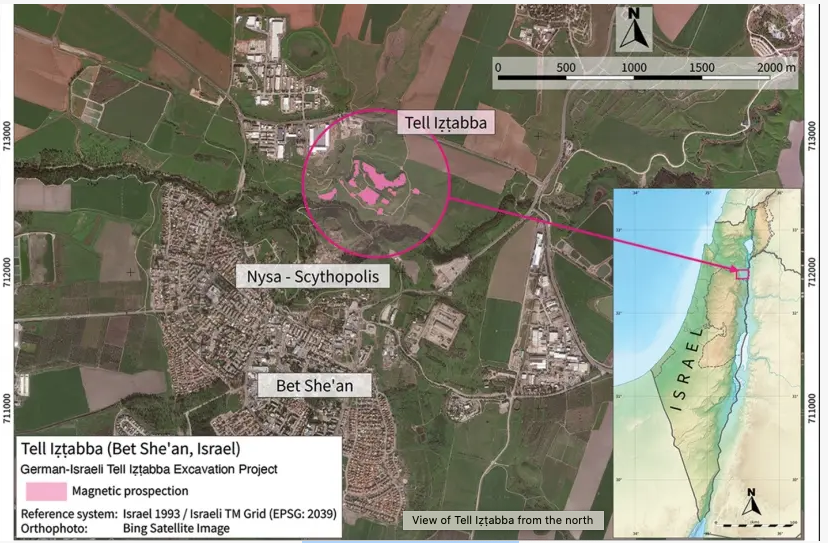The year and exact season of the destruction of the Greek town Tel Iztabba has been determined by Israeli/German researchers.
When exactly did the Hasmoneans – descendants of the Maccabees of Hanukkah fame – destroy the Greek town Tel Iztabba in present-day Israel by a military campaign? Until now, it has been suggested by archaeologists that the ruling Hasmonean dynasty did so between 111 BCE and 107 BCE.
But according to new Israeli/German research, based on the remains of chicken bones, snail shells and plant remains – as well as written evidence – the year, as well as the exact season in which this occurred, has been determined.
Prof. Oren Tal Marco Nadler of the Institute for Archaeology at the Tel Aviv University and Prof. Achim Lichtenberger from the Cluster of Excellence “Religion and Politics” at the University of Münster in Germany determined for the first time that this historical event took place in the spring of 107 BCE.
“The seasonal nature of archaeological evidence has come to the forefront of archaeological research in recent years,” they wrote. “Historical events are often recounted in history books as simply part of a year’s occurrences. The time of the year and accompanying season, however, also have an impact on the course of historical events.”
Moreover, if such events leave archaeological traces, the particular season, which can affect the population’s behavior, may affect the structure of the archaeological record, they continued.
“In other words, whether an event, such as the destruction of a domestic building, took place in summer or winter is reflected in the archaeological record. Consequently, the archaeological evidence needs to be interpreted with a consideration of seasonality in mind.”
What did they come across?
They came across chicken leg bones in the dwellings destroyed by the Hasmoneans, who according to Flavius Josephus in The Antiquities of the Jews, got their name from an ancestor Hasmoneus (Hasmon).
Josephus was a first-century Roman-Jewish historian and military leader, best known for The Jewish War, who was born in Jerusalem, then part of Roman Judea, to a father of priestly descent and a mother who claimed royal ancestry. He initially fought against the Romans during the First Jewish–Roman War as head of Jewish forces in Galilee, until surrendering in 67 CE to Roman forces led by Vespasian after a six-week siege of Yodfat.
Analyzing the archaeological finds revealed residues containing marrow that served to produce eggshells during the laying season in spring. This indicates that the chickens were slaughtered in spring, noted Lichtenberger and his Israeli colleague.
They have just published their findings in the journal Antiquity under the title “For everything there is a season: More than a year of destruction at Seleucid Tel Iztabba.”
“We also discovered the shells of field snails, which were often eaten at this time of year.” Botanical examinations of the remnants of flowers on the floors of the dwellings reveal that these plants flowered in spring.
Analysis of the objects is always accompanied by analysis of written evidence: “The contemporary Hebrew scroll of Megillat Ta’anit about the Hasmonean conquest, also known as the Scripture of the Fast, reports the expulsion of the inhabitants in the Hebrew month of Sivan, which corresponds to our May/June. Only the multiplicity of analytical methods makes precise statements possible.”
“The destruction of the Greek town Tel Iztabba in present-day Israel during a military campaign waged by the Hasmoneans, a Judean ruling dynasty in the 2nd and 1st centuries BC, has so far been dated to between 111 and 107 BCE”, says Lichtenberger. “More recent research dates it to 108/107 BCE, based on coin finds and the siege of the city of Samaria at the same time.
Now, using our multi-proxy approach that makes use of several analytical methods, we can for the first time date the events with certainty to the spring of 107 BCE.”
From an archaeological point of view, this makes spring the season of destruction,” said the team. This underlines previous findings on Hellenistic warfare, as military offensives usually took place in spring and early summer. “The individual data taken on their own would not justify determining such a clear chronology,” they stressed.
“Only by taking an overall view of the results from all analytical methods can we provide more precise information about the time of the destruction of Tel Iztabba, and thus about the course of the Hasmonean campaign.The finds must therefore be interpreted in the light of the seasons.”
Source: JPOST
